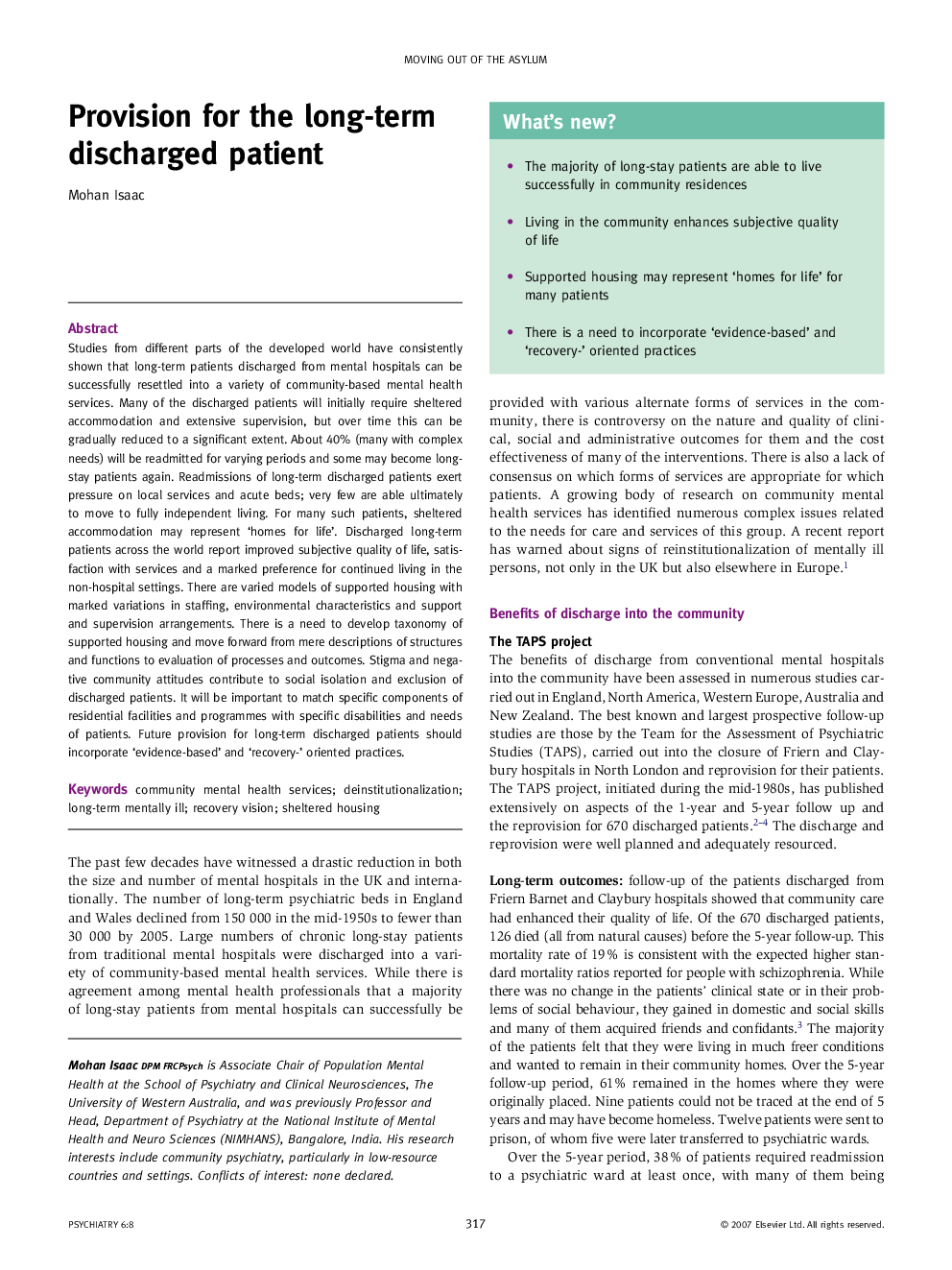| Article ID | Journal | Published Year | Pages | File Type |
|---|---|---|---|---|
| 4190141 | Psychiatry | 2007 | 4 Pages |
Studies from different parts of the developed world have consistently shown that long-term patients discharged from mental hospitals can be successfully resettled into a variety of community-based mental health services. Many of the discharged patients will initially require sheltered accommodation and extensive supervision, but over time this can be gradually reduced to a significant extent. About 40% (many with complex needs) will be readmitted for varying periods and some may become long-stay patients again. Readmissions of long-term discharged patients exert pressure on local services and acute beds; very few are able ultimately to move to fully independent living. For many such patients, sheltered accommodation may represent ‘homes for life’. Discharged long-term patients across the world report improved subjective quality of life, satisfaction with services and a marked preference for continued living in the non-hospital settings. There are varied models of supported housing with marked variations in staffing, environmental characteristics and support and supervision arrangements. There is a need to develop taxonomy of supported housing and move forward from mere descriptions of structures and functions to evaluation of processes and outcomes. Stigma and negative community attitudes contribute to social isolation and exclusion of discharged patients. It will be important to match specific components of residential facilities and programmes with specific disabilities and needs of patients. Future provision for long-term discharged patients should incorporate ‘evidence-based’ and ‘recovery-’ oriented practices.
